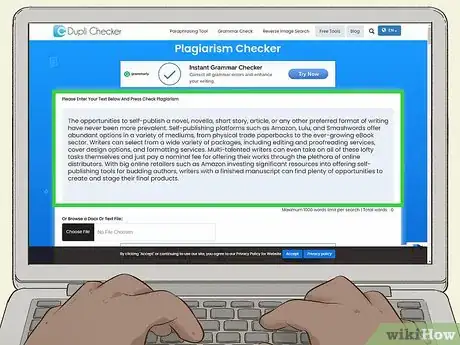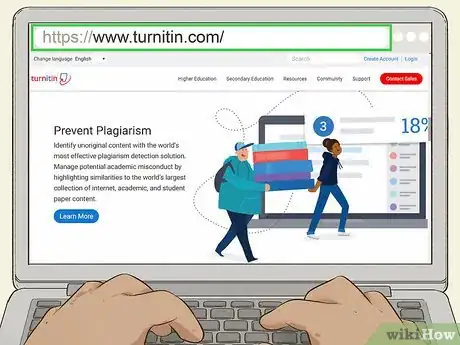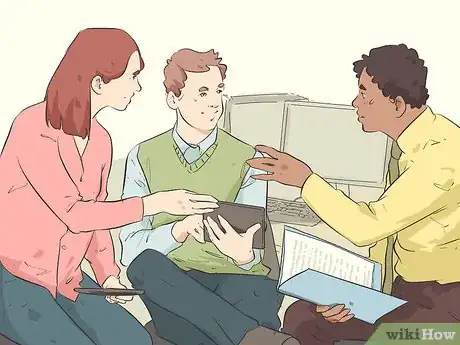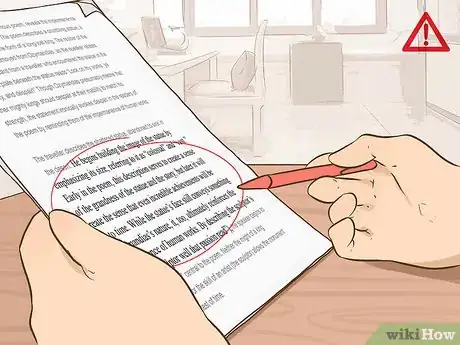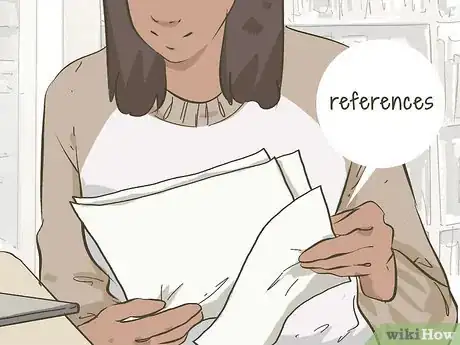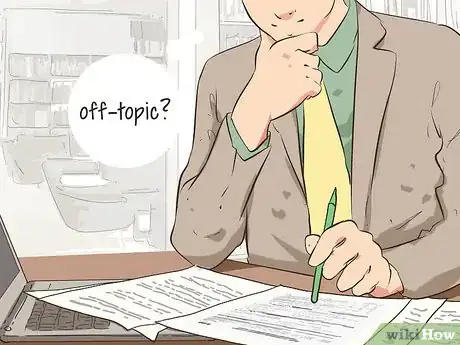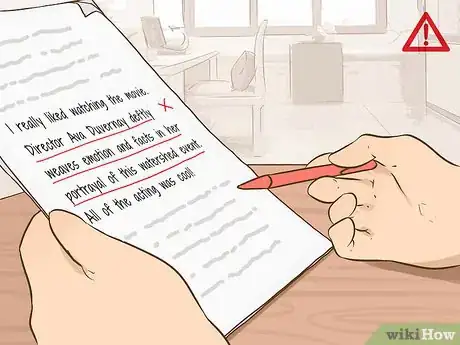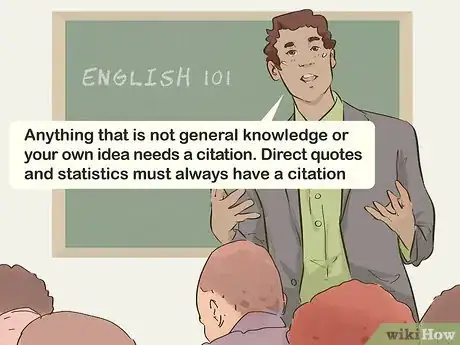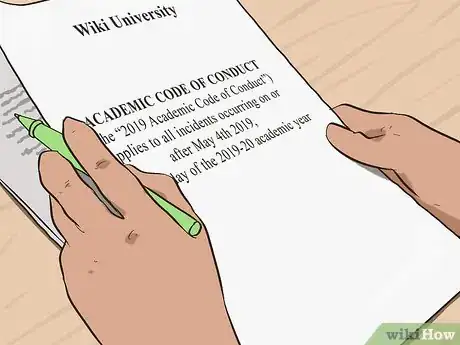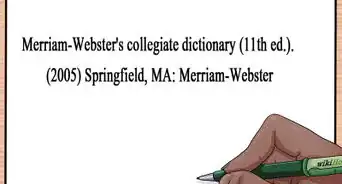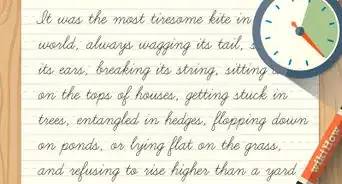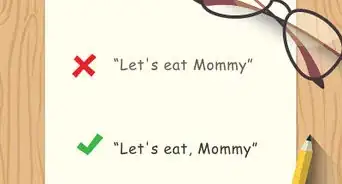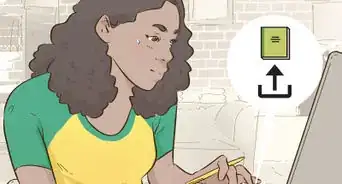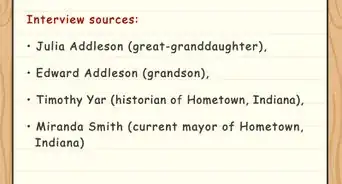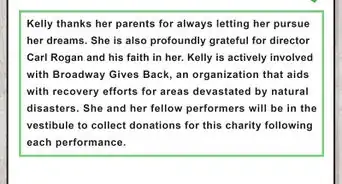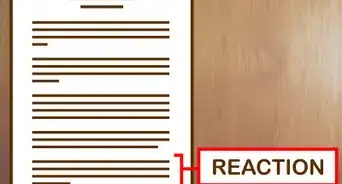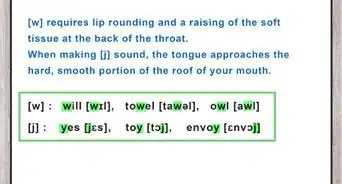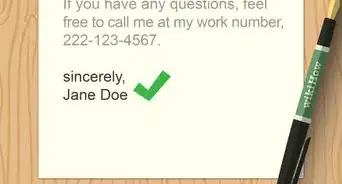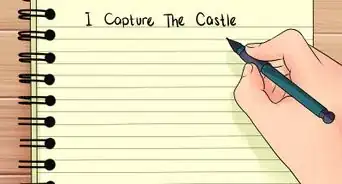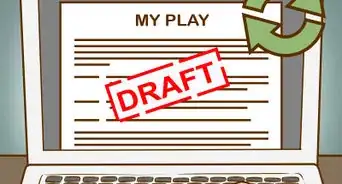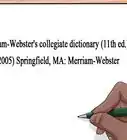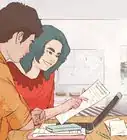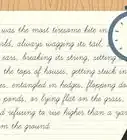This article was co-authored by César de León, M.Ed.. César de León is an Educational Leadership Consultant and currently serves as an Assistant Principal for the Austin Independent School District in Austin, TX. César specializes in education program development, curriculum improvement, student mentorship, social justice, equity leadership, and family and community engagement. He is passionate about eradicating inequities in schools for all children, especially those who have been historically underserved and marginalized. César holds a Bachelor’s degree in Education and Biology from Texas State University and a Master’s degree in Educational Leadership from The University of Texas at Austin.
There are 9 references cited in this article, which can be found at the bottom of the page.
This article has been viewed 71,292 times.
If you’re a teacher, you’ve likely encountered plagiarism more than once. This can be really frustrating, even if the student doesn’t do it on purpose. When you’re grading, utilize online tools to check any papers that seem like they might have “borrowed” from a source without citing it. You can also use specific software to check all papers and keep an eye out for red flags as you read. It’s also a good idea to be proactive and educate students so that you can prevent future offenses.
Things You Should Know
- Copy and paste the text into a free online plagiarism tool to easily detect plagiarism.
- Keep an eye out for abrupt changes in style or voice, odd formatting changes, and papers that veer off-topic.
- Plagiarism is sometimes an honest mistake. Make sure you clearly define what is and isn't considered plagiarism for your students.
Steps
Using Online Tools
-
1Run a Google search to easily check a small section of the paper. If you come across a sentence or paragraph that you think might be plagiarized, you can easily check it out using Google. Simply copy and paste the section of writing you want to check into the search bar of Google. Put quotation marks at the beginning and end of the passage so that your search will turn up that exact wording.
- This is a simple and free way to check for plagiarism.[1]
- If you find that it is a case of plagiarism, make sure to save the link to the site where you found the original source.
-
2Use free online applications to check electronic documents. There are many free websites that will check for plagiarism, and they are typically more thorough than a basic Google search. You can search online for free plagiarism checkers. Once you choose a site to use, you can copy and paste the text that you want to check into the site. Many sites will also allow you to upload an entire document to be checked. Some popular sites are:[2] [3]
- Dupli Checker
- PaperRater
- Plagiarism
Advertisement -
3Try a commercial service for more efficient checking. If you need to regularly check a large number of papers, it is probably worth it to pay for a service that can help you keep up. If you are an educator, your school might have already purchased access to one of these sites.[4] If not, you can buy a membership for yourself. These sites can automatically check all papers that are turned in.
- Some of the most popular services are Turnitin.com and EVE (Essay Verification Engine).
-
4Encourage faculty at your school to use a similar process. If your school doesn’t have a policy about how to check for plagiarism, you can suggest that everyone use a similar process. For example, if everyone uses Turnitin.com, students will know that their work will be checked the same way in every class. If they know their work will be vetted, they might be less likely to cheat.[5]
Reading Critically to Catch Plagiarism
-
1Keep an eye out for odd formatting changes. Sometimes students copy and paste passages directly from an outside source into their paper. If you notice a change in font type or size, that is a sign that it might be plagiarism. Also, keep an eye out for seemingly random italics or bold type.[6]
- Try requiring a specific font type and size. That might make it even easier to notice if someone changes the format.
-
2Check references to see if they are out of date or formatted wrong. Old sources might indicate that a student copied information from an older paper or article. Of course, if you are teaching history, students might not be using a lot of recent sources. But for most topics, the newer the information, the better. Check the source to see if the student might have used it to plagiarize.[7]
- If you require APA formatting and the student uses Chicago, for example, that is a sign that they might have copied the sources from another paper or site.
-
3Judge whether the paper veers off-topic. Students often look for essays online to turn in as their own. Most of these online essays are pretty general. If you ask students to answer a specific essay question and you notice while you're reading that the subject seems to abruptly change, try running the passage through a plagiarism checker.[8]
- For example, maybe you asked a question specifically about Reagan’s economic policies. If the essay starts with an introduction on that topic but then ends up discussing issues completely unrelated to economics, the student might have used a generic essay on President Reagan to copy.
-
4Notice abrupt changes in style or voice. You can usually tell if there are more than 1 “authors” of the paper. If the student writes at an 8th-grade level for part of the paper and then switches to more sophisticated prose, check for plagiarism.[9]
- For example, this passage has distinctly different styles within it: “I really liked watching the movie. Director Ava Duvernay deftly weaves emotion and facts in her portrayal of this watershed event. All of the acting was cool!” The middle sentence doesn’t have the same tone or style as the other sentences.
-
5Ask the student to meet to discuss the concepts in their paper. Unless you have concrete proof, try not to start by accusing the student of plagiarism. Instead, ask to meet with them one on one. Talk to them about their paper to get a sense of whether or not they seem to understand the information in their paper.[10]
- You could say, “You made a really sophisticated argument when you compared Shakespeare to more modern playwrights. What led you down that path?” If the student can't articulate answers about their paper, that is a red flag.
Preventing Plagiarism and Dealing with Offenders
-
1Discuss and define plagiarism when giving the assignment. Plagiarism is often an honest mistake. Many students genuinely don’t understand what needs to be quoted. When you explain the assignment, take time to give students a lesson about what constitutes plagiarism.[11] [12]
- You can say something like, “Anything that is not general knowledge or your own idea needs a citation. Direct quotes and statistics must always have a citation.”
- If your school has a policy on plagiarism, include it in your syllabus. If necessary, you can write your own.
-
2Go over the citation guide you want students to use. If students understand how to write proper citations, they are more likely to use them. Tell students what citation system you would like them to use and spend some time in class explaining the system. For example, if you want them to use APA, show them how to cite a book and a website.[13]
- You can also include a link to the citation guide in the guidelines for the paper.
-
3Write unique assignments so that students can’t easily find a paper online. Don’t give broad essay prompts such as “Write about Winston Churchill.” Instead, write more complex questions that paper mills won’t likely have in the archives. If you want students to write about Churchill, try something like, “How did Churchill’s personality impact the way he led Britain in World War II? Give specific examples of how his larger than life personality directly affected the outcome of his diplomatic efforts.”[14]
- If you teach the same class every year, make sure to change up the paper topics each term. This will help cut down on students using papers that previous students wrote.
-
4Follow your school’s academic code of conduct to handle the situation. If you do find evidence of plagiarism, make sure to follow protocol. For example, you might be required to notify the principal or guidance counselor. Some schools have a no-tolerance policy, which means that the student automatically fails the assignment or even the class.[15]
- If you aren’t sure what the policy is, ask a co-worker or your supervisor to provide you with that information.
- Meet with the student first if you think it was an innocent mistake. Many students plagiarize without even realizing it. Consider talking to the student first to see if they understand what they did wrong.
Expert Q&A
-
QuestionHow do I prevent plagiarism as a teacher?
 César de León, M.Ed.César de León is an Educational Leadership Consultant and currently serves as an Assistant Principal for the Austin Independent School District in Austin, TX. César specializes in education program development, curriculum improvement, student mentorship, social justice, equity leadership, and family and community engagement. He is passionate about eradicating inequities in schools for all children, especially those who have been historically underserved and marginalized. César holds a Bachelor’s degree in Education and Biology from Texas State University and a Master’s degree in Educational Leadership from The University of Texas at Austin.
César de León, M.Ed.César de León is an Educational Leadership Consultant and currently serves as an Assistant Principal for the Austin Independent School District in Austin, TX. César specializes in education program development, curriculum improvement, student mentorship, social justice, equity leadership, and family and community engagement. He is passionate about eradicating inequities in schools for all children, especially those who have been historically underserved and marginalized. César holds a Bachelor’s degree in Education and Biology from Texas State University and a Master’s degree in Educational Leadership from The University of Texas at Austin.
Educational Leadership Consultant The best way to prevent plagiarism is not just to detect it, but to also teach students about it. That's our job as teachers. We don't want to be punitive and penalize students, we want to find out why they're doing it and how they can avoid it. They need to learn how to cite the work of someone else and why it's important to cite their work.
The best way to prevent plagiarism is not just to detect it, but to also teach students about it. That's our job as teachers. We don't want to be punitive and penalize students, we want to find out why they're doing it and how they can avoid it. They need to learn how to cite the work of someone else and why it's important to cite their work. -
QuestionHow can I detect what chunks of the text have been plagiarized?
 Community AnswerFeed the text through a good plagiarism checker online, such as Grammarly. It will highlight the parts that are plagiarized and show the source the material was copied from.
Community AnswerFeed the text through a good plagiarism checker online, such as Grammarly. It will highlight the parts that are plagiarized and show the source the material was copied from. -
QuestionHow do I detect if my poems have been plagiarized online?
 Jazza_KnpCommunity AnswerYou could try Googling the complete poems and checking the results coming up. it's the simplest check teachers use to see if the students' essays have been copied from the internet, you could see if your poems are cited on sites they shouldn't be.
Jazza_KnpCommunity AnswerYou could try Googling the complete poems and checking the results coming up. it's the simplest check teachers use to see if the students' essays have been copied from the internet, you could see if your poems are cited on sites they shouldn't be.
References
- ↑ https://support.google.com/edu/classroom/answer/9335819?hl=en
- ↑ https://www.grammarly.com/plagiarism-checker
- ↑ César de León, M.Ed.. Educational Leadership Consultant. Expert Interview. 11 November 2020.
- ↑ César de León, M.Ed.. Educational Leadership Consultant. Expert Interview. 11 November 2020.
- ↑ http://libguides.law.umich.edu/c.php?g=38132&p=242784
- ↑ https://www.library.kent.edu/files/Library_Live_II_Ways_to_detect_Plagiarism.pdf
- ↑ https://www.library.kent.edu/files/Library_Live_II_Ways_to_detect_Plagiarism.pdf
- ↑ https://www.library.kent.edu/files/Library_Live_II_Ways_to_detect_Plagiarism.pdf
- ↑ https://gsi.berkeley.edu/gsi-guide-contents/academic-misconduct-intro/plagiarism/detect-plagiarism/
- ↑ https://cmsw.mit.edu/writing-and-communication-center/resources/teachers/detect-plagiarism/
- ↑ https://www.library.kent.edu/files/Library_Live_II_Ways_to_detect_Plagiarism.pdf
- ↑ César de León, M.Ed.. Educational Leadership Consultant. Expert Interview. 11 November 2020.
- ↑ https://www.library.kent.edu/files/Library_Live_II_Ways_to_detect_Plagiarism.pdf
- ↑ https://www.cmu.edu/teaching/designteach/design/instructionalstrategies/writing/preventplagiarism.html
- ↑ https://www.accreditedschoolsonline.org/resources/preventing-plagiarism/

